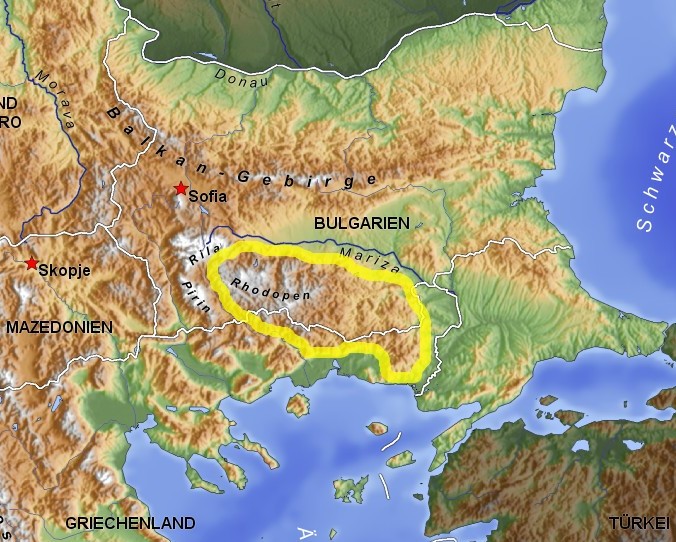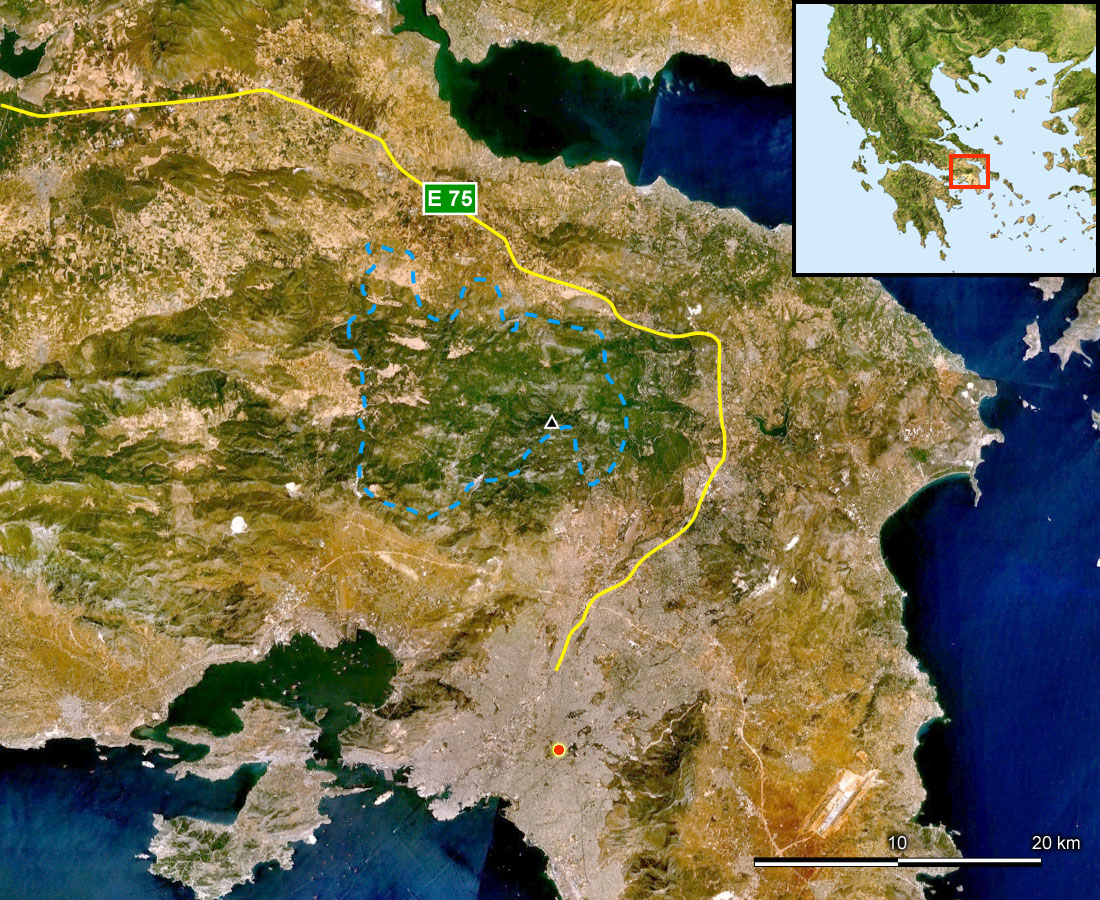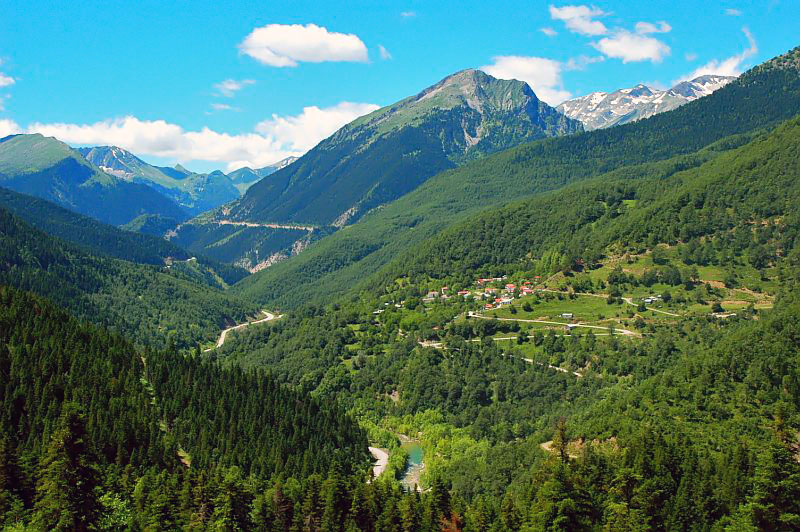|
Alyssoides
''Alyssoides'' is a genus of flowering plants in the family Brassicaceae containing a single species, ''Alyssoides utriculata''. A herbaceous perennial plant native to Southern Europe and Turkey, it grows on dry rocky slopes and on calcareous rocks, reaching heights of 20 to 50cm and blooming with yellow flowers between April and May–July. 'A. graeca'' and ''A. bulgarica''./ref> The genus formerly contained a second species, ''Alyssoides cretica'', but after molecular phylogenetic studies from 2008 and 2013 it was reassigned to the genus ''Lutzia''. There are two subspecies: the ''A. utricalata'' subsp. ''utriculata'', and ''A. utriculata'' subsp. ''bulgarica'', which characteristically differ by the pattern and shape of their hairs. ''Alyssoides utriculata'' is used as an ornamental plant and in gardening may be referred to as ''inflated bladderseed'' or as (Greek) bladderpod See also entries aAlyBaseanBrassiBase(accessed 28 December 2021). (not to be confused with other p ... [...More Info...] [...Related Items...] OR: [Wikipedia] [Google] [Baidu] |
Lutzia (plant)
''Lutzia cretica'' is a species of herbaceous plant endemic to the Aegean Islands of Greece. It is the only species in the genus ''Lutzia'', which belongs to the cabbage family Brassicaceae. Prior to a 2015 reappraisal based on molecular phylogenetic data, the plant was most commonly included in the genus ''Alyssoides'' as ''Alyssoides cretica''. ''Lutzia cretica'' grows into a characteristic spherical bush. Its leaves are greyish-white and tomentose (covered in soft dense hairs). It produces large yellow flowers between February and April, and the fruits can remain on the plant until June. It grows in the crevices of limestone cliffs and ravines, from sea level up to 400m, less frequently as high as 800m. It is found on the islands of Crete (mostly the central and eastern parts and on some small offshore islets), Kasos, Karpathos, and Astypalaia Astypalaia (Greek: Αστυπάλαια, ), is a Greek island with 1,334 residents (2011 census). It belongs to the Dodecanese, ... [...More Info...] [...Related Items...] OR: [Wikipedia] [Google] [Baidu] |
Bladderpod (other)
Bladderpod is a common name for several plants and may refer to: *'' Alyssoides utriculata'', a species of flowering plant in the family Brassicaceae *'' Cleome isomeris'', a species of flowering plant in the family Cleomaceae *''Lesquerella'', a genus of flowering plants in the Family Brassicaceae, now considered a synonym of ''Physaria'' *'' Lobelia inflata'', a species of flowering plant in the family Campanulaceae *''Paysonia'', a genus of flowering plants in the family Brassicaceae *''Peritoma arborea ''Cleomella arborea'' syn. ''Peritoma arborea'' (formerly '' Isomeris arborea'', syn. '' Cleome isomeris''), is a perennial shrub or bush in the spiderflower family (Cleomaceae) known by the common names bladderpod, bladderpod spiderflower and bu ...'', a species of flowering plant in the family Cleomaceae *'' Physaria'', a genus of flowering plants in the family Brassicaceae {{Plant common name ... [...More Info...] [...Related Items...] OR: [Wikipedia] [Google] [Baidu] |
Philip Miller
Philip Miller FRS (1691 – 18 December 1771) was an English botanist and gardener of Scottish descent. Miller was chief gardener at the Chelsea Physic Garden for nearly 50 years from 1722, and wrote the highly popular ''The Gardeners Dictionary''. Life Born in Deptford or Greenwich, Miller was chief gardener at the Chelsea Physic Garden from 1722 until he was pressured to retire shortly before his death. According to the botanist Peter Collinson, who visited the physic garden in July 1764 and recorded his observation in his commonplace books, Miller "has raised the reputation of the Chelsea Garden so much that it excels all the gardens of Europe for its amazing variety of plants of all orders and classes and from all climates..." He wrote ''The Gardener's and Florists Dictionary or a Complete System of Horticulture'' (1724) and ''The Gardener's Dictionary containing the Methods of Cultivating and Improving the Kitchen Fruit and Flower Garden'', which first appeared in 17 ... [...More Info...] [...Related Items...] OR: [Wikipedia] [Google] [Baidu] |
North Macedonia
North Macedonia, ; sq, Maqedonia e Veriut, (Macedonia before February 2019), officially the Republic of North Macedonia,, is a country in Southeast Europe. It gained independence in 1991 as one of the successor states of Socialist Federal Republic of Yugoslavia, Yugoslavia. It is a landlocked country bordering Kosovo to the northwest, Serbia to the north, Bulgaria to the east, Greece to the south, and Albania to the west. It constitutes approximately the northern third of the larger geographical Macedonia (region), region of Macedonia. Skopje, the capital and largest city, is home to a quarter of the country's 1.83 million people. The majority of the residents are ethnic Macedonians (ethnic group), Macedonians, a South Slavs, South Slavic people. Albanians in North Macedonia, Albanians form a significant minority at around 25%, followed by Turks in North Macedonia, Turks, Romani people in North Macedonia, Romani, Serbs in North Macedonia, Serbs, Bosniaks in North Mac ... [...More Info...] [...Related Items...] OR: [Wikipedia] [Google] [Baidu] |
Rhodopes
The Rhodopes (; bg, Родопи, ; el, Ροδόπη, ''Rodopi''; tr, Rodoplar) are a mountain range in Southeastern Europe, and the largest by area in Bulgaria, with over 83% of its area in the southern part of the country and the remainder in Greece. Golyam Perelik is its highest peak at . The mountain range gives its name to the terrestrial ecoregion Rodope montane mixed forests that belongs in the temperate broadleaf and mixed forests biome and the Palearctic realm. The region is particularly notable for its karst areas with their deep river gorges, large caves and specific sculptured forms, such as the Trigrad Gorge. A significant part of Bulgaria's hydropower resources are located in the western areas of the range. There are a number of hydro-cascades and dams used for electricity production, irrigation, and as tourist destinations. In Greece, there are also the hydroelectric power plants of Thisavros and Platanovrysi. The Rhodopes have a rich cultural heritage ... [...More Info...] [...Related Items...] OR: [Wikipedia] [Google] [Baidu] |
Stara Planina
The Balkan mountain range (, , known locally also as Stara planina) is a mountain range in the eastern part of the Balkan Peninsula in Southeastern Europe. The range is conventionally taken to begin at the peak of Vrashka Chuka on the border between Bulgaria and Serbia. It then runs for about , first in a south-easterly direction along the border, then eastward across Bulgaria, forming a natural barrier between the northern and southern halves of the country, before finally reaching the Black Sea at Cape Emine. The mountains reach their highest point with Botev Peak at . In much of the central and eastern sections, the summit forms the watershed between the drainage basins of the Black Sea and the Aegean. A prominent gap in the mountains is formed by the sometimes narrow Iskar Gorge, a few miles north of the Bulgarian capital, Sofia. The karst relief determines the large number of caves, including Magura, featuring the most important and extended European post-Palaeolithi ... [...More Info...] [...Related Items...] OR: [Wikipedia] [Google] [Baidu] |
Mount Giona
Mount Giona ( el, Γκιώνα, also transliterated as ''Gkiona'', ) is a mountain in Phocis, Central Greece. It is located between the mountains of Parnassus to the east, Vardousia to the west, and Oeta to the north. Known in classical antiquity as the ''Aselinon Oros'' ( el, Ασέληνον όρος, 'moonless mountain'), it is the highest mountain south of Olympus and the fifth overall in Greece. Pyramida is its highest peak at . Other peaks include the Perdika (Πέρδικα, 2,484 m), Tragonoros (Τραγονόρος, 2,456 m), Platyvouna or Plativouna (Πλατυβούνα, 2,316 m), Profitis Ilias (Προφήτης Ηλίας, 2,298 m), Kastro (Κάστρο, 2,176 m), Vraila (Βράϊλα, 2,177 m), Paliovouni (Παλιοβούνι, 2,122 m), Pyrgos (Πύργος, 2,066 m), Lyritsa (Λυρίτσα, 2,007 m), Botsikas (Μπότσικας, 1,945 m), Kokkinari (Κοκκινάρι, 1,908 m), Tychioni (Τυχιούνι, 1,842) and another Profitis Ilias (Προφήτης Ηλ ... [...More Info...] [...Related Items...] OR: [Wikipedia] [Google] [Baidu] |
Parnassus
Mount Parnassus (; el, Παρνασσός, ''Parnassós'') is a mountain range of central Greece that is and historically has been especially valuable to the Greek nation and the earlier Greek city-states for many reasons. In peace, it offers scenic views of the countryside, being a major international recreational site, with views of montane landscapes. Economically its rolling foothills and valleys host extensive groves of olive, a cash crop marketed world-wide since prehistory. The mountain is also the location of historical, archaeological, and other cultural sites, such as Delphi perched on the southern slopes of the mountain in a rift valley north of the Gulf of Corinth. Parnassus is laced with trails for hiking in the three warm seasons. In the winter the entire range is open to skiing, especially from the resorts of Arachova. Its melting snows are a source of municipal water to the surrounding communities. The mountain is composed of limestone, but also contains bauxi ... [...More Info...] [...Related Items...] OR: [Wikipedia] [Google] [Baidu] |
Parnis
Mount Parnitha ( ell, Πάρνηθα, , Katharevousa and grc, Πάρνης ''Parnis''/''Parnes''; sometimes Parnetha) is a densely forested mountain range north of Athens, the highest on the peninsula of Attica, with an elevation of 1,413 m, and a summit known as Karavola (Καραβόλα). Much of the mountain is designated a national park, and is a protected habitat for wildfowl, first created in 1961. The summit is located 18 km north of Acharnes and about 30 km north of Athens city center, while the mountain covers approximately 250 km² of land. Other peaks include Mavrovouni (Μαυροβούνι), Ornio (1,350 m), Area (1,160 m), Avgo or Avgho (1,150 m), and Xerovouni (Ξεροβούνι, meaning "dry mountain": 1,120 m). It also has two shelters Mpafi and Flampouri.Parnitha National park official site. ... [...More Info...] [...Related Items...] OR: [Wikipedia] [Google] [Baidu] |
Pentelikon
Mount Pentelicus or Pentelikon (, or ) is a mountain in Attica, Greece, situated northeast of Athens and southwest of Marathon. Its highest point is the peak ''Pyrgari'', with an elevation of 1,109 m. The mountain is covered in large part with forest (about 60 or 70%), and can be seen from southern Athens (Attica), the Pedia plain, Parnitha, and the southern part of the northern suburbs of Athens. Houses surround the mountain, especially in Vrilissia, Penteli, Ekali, Dionysos and north of Gerakas. Marble from Mount Pentelicus is of exceptionally high quality and was used to construct much of the Athenian Acropolis. Later, Pentelic marble was exported to Rome, where it was used in construction and in sculptures. In ancient times it was also called Brilissos or Brilittos (, ) which is the origin of the name of the nearby suburb of Vrilissia. Mountain Mount Pentelicus has been famous for its marble since antiquity. Pentelic marble was used for the construction of buildings ... [...More Info...] [...Related Items...] OR: [Wikipedia] [Google] [Baidu] |
Pindus
The Pindus (also Pindos or Pindhos; el, Πίνδος, Píndos; sq, Pindet; rup, Pindu) is a mountain range located in Northern Greece and Southern Albania. It is roughly 160 km (100 miles) long, with a maximum elevation of 2,637 metres (8652') ( Mount Smolikas). Because it runs along the border of Thessaly and Epirus, the Pindus range is known colloquially as the ''spine of Greece''. The mountain range stretches from near the Greek-Albanian border in southern Albania, entering the Epirus and Macedonia regions in northern Greece down to the north of the Peloponnese. Geologically it is an extension of the Dinaric Alps, which dominate the western region of the Balkan Peninsula. History of the name Historically, the name Pindos refers to the mountainous territory that separates the greater Epirus region from the regions of Macedonia and Thessaly. According to John Tzetzes (a 12th-century Byzantine writer), the Pindos range was then called Metzovon. When translat ... [...More Info...] [...Related Items...] OR: [Wikipedia] [Google] [Baidu] |
Mount Olympus
Mount Olympus (; el, Όλυμπος, Ólympos, also , ) is the highest mountain in Greece. It is part of the Olympus massif near the Thermaic Gulf of the Aegean Sea, located in the Olympus Range on the border between Thessaly and Macedonia, between the regional units of Larissa and Pieria, about southwest from Thessaloniki. Mount Olympus has 52 peaks and deep gorges. The highest peak, Mytikas (Μύτικας ''Mýtikas''), meaning "nose", rises to . It is one of the highest peaks in Europe in terms of topographic prominence. In Greek mythology, Olympus is the home of the Greek gods, on Mytikas peak. The mountain has exceptional biodiversity and rich flora. It has been a National Park, the first in Greece, since 1938. It is also a World Biosphere Reserve. Every year, thousands of visitors admire its fauna and flora, tour its slopes, and climb its peaks. Organized mountain refuges and various mountaineering and climbing routes are available. The usual starting point for cl ... [...More Info...] [...Related Items...] OR: [Wikipedia] [Google] [Baidu] |





